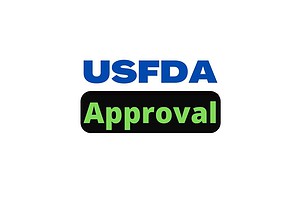Last Updated on May 18, 2024 by The Health Master
Illegal Opium
The fight against illegal opium cultivation in India takes a technological leap forward.
The Central Bureau of Narcotics (CBN) is set to deploy a Geographic Information System (GIS) mapping survey to effectively monitor and curb the illicit trade of this restricted commodity.
Cracking Down on Cultivation Spikes
This initiative comes in response to a concerning rise in illegal opium cultivation across the country.
Despite law enforcement efforts, reports indicate farmers resorting to cultivating opium alongside other crops, particularly in regions like the Northeast, Rajasthan, and Bihar.
“We’ve witnessed a surge in illegal opium cultivation,” reveals a senior official on condition of anonymity.
“Law enforcement agencies have destroyed roughly 7,000 acres of production in the past few months across Bihar, Jharkhand, Manipur, and Rajasthan.“
Challenges and the GIS Solution
Quantifying the exact extent of illegal opium cultivation remains a challenge.
The dispersed nature, often mixed with other crops, makes identification difficult. This is where GIS mapping comes into play.
GIS: A Powerful Tool for Precision Monitoring
A GIS mapping survey allows the CBN to create a digital representation of geographical features.
This facilitates:
- Pinpointing Cultivation Sites: By analyzing satellite imagery and other geospatial data, the CBN can pinpoint the exact locations of illegal opium cultivation.
- Improved Monitoring: GIS enables real-time monitoring of cultivation patterns and trends, allowing for quicker intervention by authorities.
- Data-Driven Decisions: The collected data empowers the CBN to make informed decisions regarding resource allocation and targeted enforcement efforts.
India’s Legal Opium Production
It’s important to differentiate between illegal and legal opium cultivation.
India is one of only 12 countries authorized by the UN Single Convention on Narcotic Drugs (1961) to produce opium for medicinal purposes.
This legal cultivation takes place in designated areas under strict government licensing in Madhya Pradesh, Rajasthan, and Uttar Pradesh.
Meeting Medical Demands
The Indian government recognizes the growing demand for opium-derived pharmaceutical products like morphine and codeine, crucial for pain management, cough syrups, palliative care, and cancer treatment.
To meet this demand, plans are underway to increase the number of legal opium cultivator licenses from the current 112,000 to 145,000.
The Allure of the Black Market
The significant price difference between legal and illegal markets fuels the illicit trade.
The government offers cultivators ₹950-3,500 per kg, while black-market prices can skyrocket to ₹1.5 lakh per kg.
This disparity incentivizes some to cultivate illegally, creating a lucrative but dangerous market.
International Implications
Opium prices in the international market range from $355 to $375 per kg, further fueling smuggling and illegal drug markets.
The CBN’s GIS initiative represents a crucial step towards combating illegal opium cultivation, protecting public health, and fulfilling India’s commitment to responsible opium production.
Disclaimer: This article contains information derived from the source mentioned below. Our team utilized an AI language model to rewrite and present the news or article in a unique format.

Telangana: Illegal sale of drugs, 3 arrested under NDPS Act
USFDA approval granted for this generic drug for Arthritis
Interstate illegal pharma supply and manufacturing network busted
FDA Maharashtra: Two Agencies Accused of Distributing Spurious Drugs
Gujarat FDCA Takes Action with Inspections and License Revocations
PCI Approval Process Extended for the year 2024-25
USFDA approval granted for these 5 products: Alembic
Fake Reference Material Certificates Threaten Integrity: How to Ensure Authenticity
USFDA issued Form 483 with 1 observation to Cipla
For informative videos by The Health Master, click on the below YouTube icon:
For informative videos on Medical Store / Pharmacy, click on the below YouTube icon:
For informative videos on the news regarding Pharma / Medical Devices / Cosmetics / Homoeopathy etc., click on the below YouTube icon:
For informative videos on consumer awareness, click on the below YouTube icon:











